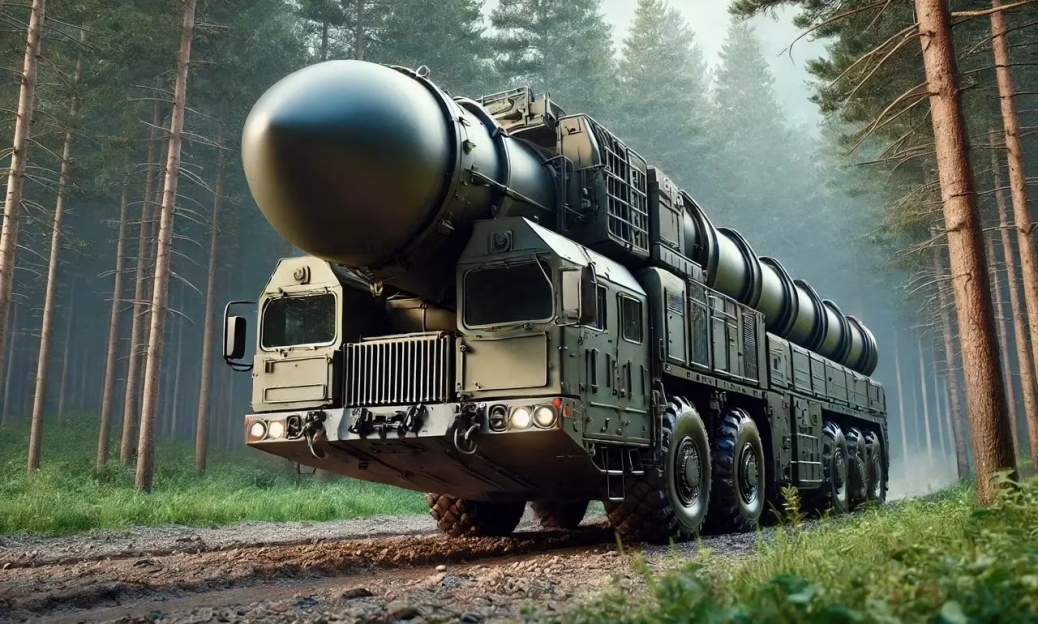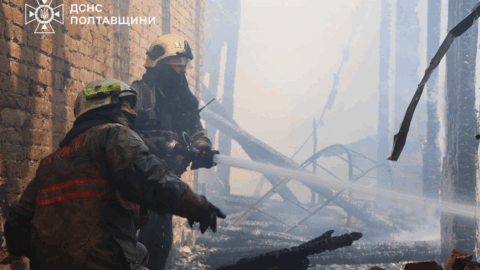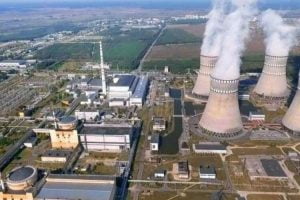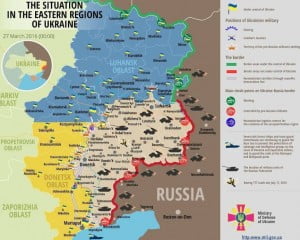They’ve piled up so much nonsense from all sides that it’s hard to sort through it all at once. In Russia, they’ve completely lost their minds (though how much further could they go?) – the mysterious “Rubezh,” the hypersonic “Oreshnik,” claims of no defenses, and a deep crater with groundwater where Yuzhmash once stood… In short, everyone is expected to bow down and tremble before Putin.
In reality, there’s no such thing as the “Rubezh” intercontinental missile. It’s all Kremlin blather built around a sculpture of nonsense. As for the “Oreshnik,” it does exist – but only as a few experimental prototypes (previously referred to as “Kedr,” which makes sense given that cedar trees produce nuts).
Back in the Soviet era, our Yuzhnoye Design Bureau developed a project for a mobile intercontinental solid-fuel missile complex called “Universal,” but its implementation was handed over to the Moscow Institute of Thermal Technology – they always siphoned off the best from us. The “Universal” entered service under the name “Topol-M.” Later, Moscow simplified and modernized it – replacing three stages with two – leading to its current version, the “Yars.” This massive “beast,” weighing nearly 50 tons, moves on an eight-axle tractor through taiga roads, carries four warheads, and has a flight range of 6,000 km – enough to strike the U.S. via the North Pole.
Around 2017, the pseudo-empire’s media discussed plans to modernize the “Yars” – a new warhead deployment platform was intended to increase the speed of the warheads, making them harder to intercept by missile defense systems. This was supposed to become the “Rubezh.” In the pseudo-empire, it seems that repainting a missile in new camouflage is enough to claim it’s a groundbreaking development in missile engineering. However, funding fell short at the time – it was all allocated to the hypersonic “Avangard” warhead.
After the invasion of Ukraine began, funds were likely found, and ideas for the “Rubezh” were realized. The Thermal Technology Institute took the tried-and-tested “Yars” design, reduced its size by a quarter, revamped the warhead deployment platform, and increased the number of warheads – from four to six. Accordingly, the tractor was reduced to six axles instead of eight, and the range decreased to about 3,000–4,000 km.
In my opinion, this very missile, hastily named the “Oreshnik,” is what entered flight testing. The Russians formally notified the U.S. of the test, closed airspace – everything as per protocol. But instead of using a proper test range, the scumbags launched the experimental missile at the million-strong city of Dnipro, targeting Yuzhmash (they didn’t dare strike the U.S. embassy in Kyiv, as they had threatened). Afterward, Putin and other propagandists launched an hysterical intimidation campaign – threatening strikes on the Verkhovna Rada, the Yavoriv training ground, Poland, or wherever they pleased.
Although the warheads that hit Yuzhmash lacked explosives, they traveled at high speeds, leaving extremely deep craters (there are nuances here I won’t discuss until official information emerges).
The combat effectiveness of the “Oreshnik” without nuclear warheads is highly questionable – it’s like using a mining dump truck to deliver pizzas. The accuracy would be within 100 meters, at best, and each warhead could carry about 100 kg of conventional explosives – comparable to the Russian Tornado multiple launch rocket systems they’ve been using since the invasion began. Tornado rockets are also extremely difficult to intercept, yet we don’t despair over the enemy having such weapons, let alone their three-ton KAB bombs. Incidentally, all the missiles used against us over the past three years carry more explosives than the “Oreshnik” warheads. And, of course, all of these missiles can carry nuclear warheads.
Yes, the “Oreshnik” warheads reach speeds of 7–10 times the speed of sound, which is true hypersonic velocity, and they look impressive on video. But once again, let me emphasize: the warhead of any large ballistic missile reenters at hypersonic speeds – it’s basic physics. There’s nothing extraordinary or invincible about it.
And such missiles can be intercepted. The best systems for this are exoatmospheric missile defense systems like the American THAAD or Israeli Arrow. But it’s unlikely we’ll be supplied with them. The hype around the “Oreshnik” will soon fade, and its real threat is far from critical.
What concerns me more is the growing tendency to trivialize nuclear weapons as something conceivable in this war. The world must decisively end Putinism before a deranged dictator attempts to make good on his threats.
Tags: Analytics ballistic missiles icbm Russia russia ukraine war russian missiles Ukraine war





















